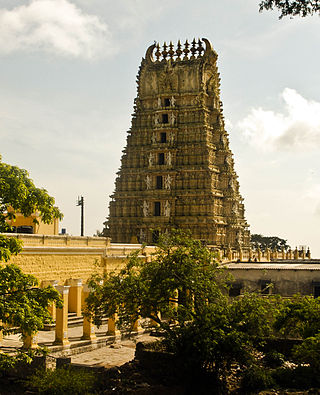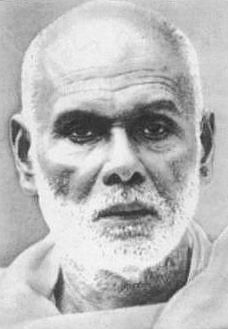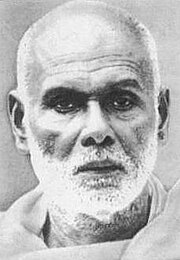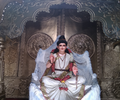
Dakshina Kannada district is located in the state of Karnataka in India, with its headquarters in the coastal city of Mangalore. It is part of the larger Tulu Nadu region. The district covers an area nestled in between the Western Ghats to its east and the Arabian Sea to its west. Dakshina Kannada receives abundant rainfall during the Indian monsoon. It is bordered by Udupi district to the north, Chikmagalur district to the northeast, Hassan district to the east, Kodagu to the southeast and Kasaragod district of Kerala to the south. According to the 2011 census of India, Dakshina Kannada district had a population of 2,083,625. It is the only district in Karnataka state to have all modes of transport like road, rail, water and air due to the presence of a major hub, Mangalore. This financial district is also known as the Cradle of Indian banking.

Tulu Nadu or Tulunad, also called Bermere Srishti or Parashurama Srishti, is a region and a proposed state on the southwestern coast of India. The Tulu people, known as 'Tuluva', speakers of Tulu, a Dravidian language, are the preponderant ethnic group of this region. South Canara, an erstwhile district and a historical area, encompassing the undivided territory of the contemporary Dakshina Kannada and Udupi districts of Karnataka State and Kasaragod district of Kerala state forms the cultural area of the Tuluver.

Bhagawan Nityananda was an Indian guru. His teachings are published in the "Chidakash Gita". Nityananda was born in Koyilandy (Pandalayini), Madras Presidency, British India.

Sivagiri is an area in Varkala Municipality of Thiruvananthapuram district in Kerala. It is a pilgrimage centre of Varkala Town where the tomb, or samadhi, of Sree Narayana Guru is situated. It is a place where Guru built the Sarada Temple dedicated to Sarada Devi. The tomb is an attraction for thousands of devotees every year, especially during the Sivagiri Pilgrimage days from 30 December to 1 January.
The Billava, Billoru, Biruveru people are an ethnic group of India. They are found traditionally in Tulu Nadu region and engaged in toddy tapping, cultivation and other activities. They have used both missionary education and Sri Narayana Guru's reform movement to upgrade themselves.

Kashi Math is a matha (monastery) and a spiritual organisation followed by the Madhva section of Gaud Saraswat Brahmins, who are also referred as Madhwa Saraswat Brahmins or Vaishnava Saraswat Brahmins. It dates back to the 16th century. With its headquarters in Brahma Ghat, Varanasi. Kashi Math has followers all over the Konkan belt, prominently in Mumbai, Goa, Udupi, Mangalore, Kochi and other parts of Karnataka and Kerala.

The Chamundeshwari Temple is a Hindu temple located on the top of Chamundi Hills about 13 km from the palace city of Mysuru in the state of Karnataka in India. The temple was named after Chamundeshwari or, the fierce form of Shakti, a tutelary deity held in reverence for centuries by the Maharaja of Mysuru.

Narayana Guru built temples at various locations in India: Kollam, Thiruvananthapuram, Thrissur, Kannur, Anchuthengu, Thalassery, Kozhikode, Mangalore. Some of the temples built by the guru are:
The Chitrapur Guru Parampara or Guru Heritage of the Chitrāpur Sāraswat Brahmins is the lineage of spiritual teachers (gurus), also known as Mathadhipatis who have led the community throughout its history.
Temples of the Indian State of Karnataka illustrate the variety of architecture prevalent in various periods. The architectural designs have found a distinguished place in forming a true atmosphere of devotion for spiritual attainment.
B. Janardhana Poojary is a senior politician from Indian National Congress party. He was a former Union Minister and Karnataka's Congress President. During the Prime Ministership of Smt. Indira Gandhi he had been appointed Union Minister of State for Finance in 1982 and he continued to be Union Minister of State for Finance during the tenure of Rajiv Gandhi until 1987. Later Prime Minister Rajiv Gandhi appointed Shree B. Janardhana Poojary as Union Minister of State for Rural Development from 1987 to 1989. Shree Rajiv Gandhi also appointed Shree B. Janardhana Poojary as General Secretary of All India Congress Committee in 1990 as well as President of Karnataka Pradesh Congress Committee in 1990. He continued to be General Secretary of All India Congress Committee during the tenure of Prime Minister Shree P. V. Narasimha Rao up to 1996. After Shree Rajiv Gandhi his wife All India Congress Committee President & United Progressive Alliance (UPA) Chairperson Smt. Sonia Gandhi also appointed Shree B. Janardhana Poojary as President of Karnataka Pradesh Congress Committee in 2003 for the second time. He continued as President of Karnataka Pradesh Congress Committee up to 2005.
Mangalore district that was partitioned from the erstwhile South Canara, has been multicultural and is a little different from the prevalent culture of the Carnataca state of India. A native of Mangalore is known as a Mangalorean in English, Kudladakulu in Tulu, Kodyaalkar in Konknni, Manglurnavaru in Kannada& Maikaaltanga in Byari.

Mangalore tiles are a type of roof tile native to the city of Mangalore, India. A variation of the Marseilles tiles developed by the Gilardoni brothers at Altkirch, France, the tiles were first introduced to India in 1860 by German missionaries of the Basel Mission of Switzerland, who also established weaving enterprises.

Hinduism is the largest religion in Kerala and Hindu lineages together make up 54.8% of the population of the state according to the 2011 census.

ISKCON Vrindavan, also called Sri Sri Krishna Balaram Mandir, is one of the major ISKCON temples in the world. It is a Gaudiya Vaishnava temple located in the city of Vrindavan, Mathura district, in the Indian state of Uttar Pradesh. The temple is dedicated to the Hindu gods Krishna and Balarama. The other deities of temple are Radha Krishna and Gauranga Nityananda.

Navaratri is an annual Hindu festival observed in honour of the goddess Durga, an aspect of Adi Parashakti, the supreme goddess. It spans over nine nights, first in the month of Chaitra, and again in the month of Ashvin (September–October). It is observed for different reasons and celebrated differently in various parts of the Hindu Indian cultural sphere. Theoretically, there are four seasonal Navaratri. However, in practice, it is the post-monsoon autumn festival called Sharada Navaratri.

Shri Gaudapadacharya Math, also known as Kavaḷē maṭha, located in Kavale, Ponda, Goa, is the oldest matha of the Smarthan Saraswat Brahman Samaj. It was founded by Gauḍapāda around 740 AD, whose student was Govinda Bhagavatpada, the guru of Adi Shankara, a highly influential figure in Hinduism. There is also a belief that Gauḍapāda himself established the Shri Gaudapadacharya matha when he lived in Gomantak (Goa). Thus, the matha came to be known as Shri Saunstan Gaudapadacharya matha. Unlike other mathas, Shri Gaudapadacharya matha is not a polemical center established to influence the faith of all Hindus, its jurisdiction is limited to only Dakshinatya Saraswat Brahmins. The Peetadhipathi "head monk" is Śrī Gauḍapadācārya. Smartist Goud Saraswat Brahman Samaj and Rajapur Saraswat Brahmin are its main disciples.

The Advaita Guru-Paramparā is the traditional lineage (parampara) of divine, Vedic and historical teachers of Advaita Vedanta. It begins with the Daiva-paramparā, the gods; followed by the Ṛṣi-paramparā, the Vedic seers; and then the Mānava-paramparā, with the historical teachers Gaudapada and Adi Shankara, and four of Shankara's pupils. Of the five contemporary acharyas, the heads of the five Advaita mathas, four acharyas trace their lineage to those four pupils and one to Adi Shankara himself.

The Mangalore Dasara, is a festival in the Indian city of Mangalore organized by Acharya Mutt. It is also referred as Navarathri Festival, Vijayadashami. The tiger dance, lion dance and bear dance are the main attractions. The city is decorated with lights for the span of 10 days of the occasion.

The city of Mangalore is proclaimed as the gateway to Karnataka and lies nestled between the blue waters of the Arabian Sea and the green, towering hills of the Western Ghats. The 184 square km city is spread out over the backwaters of the two rivers, Netravati and Gurpura.







































